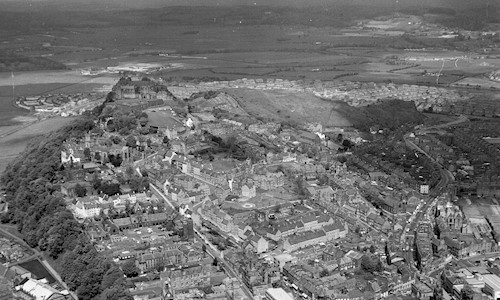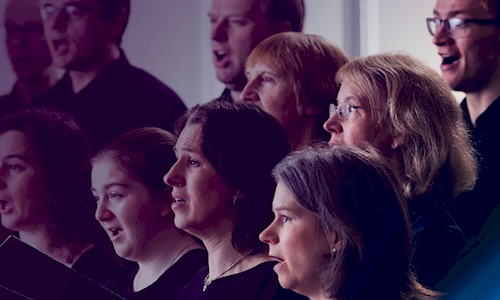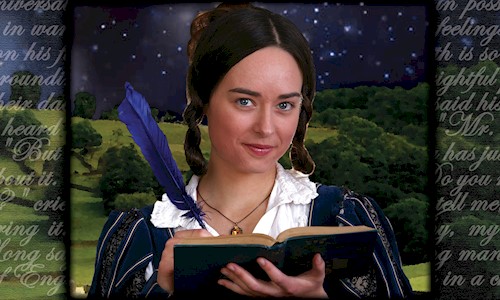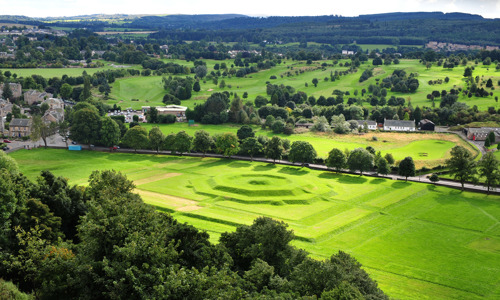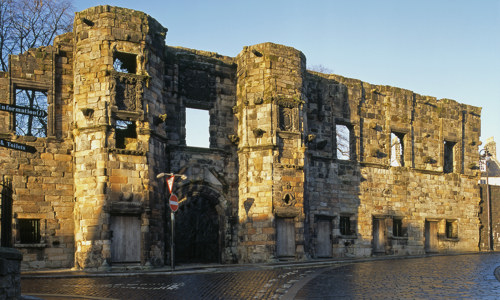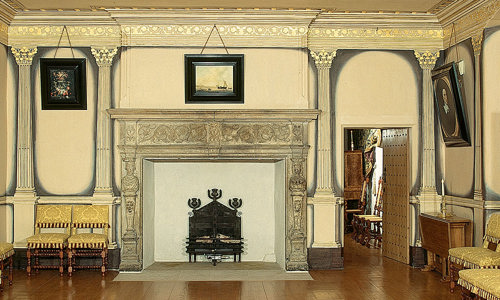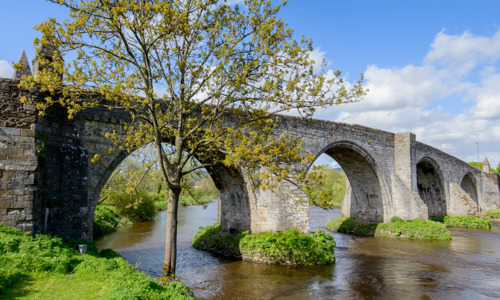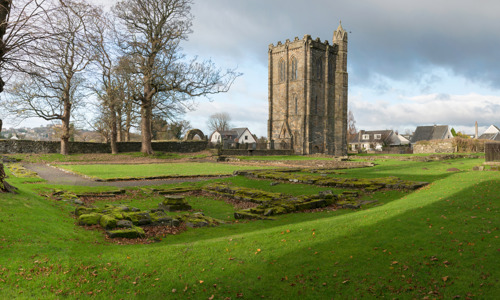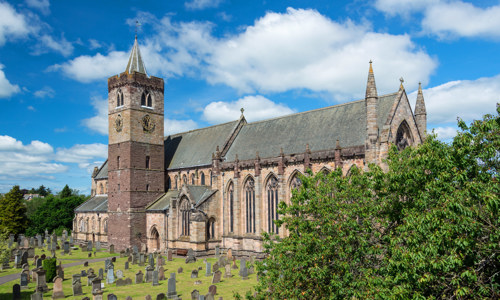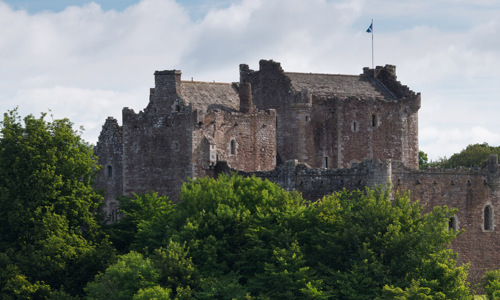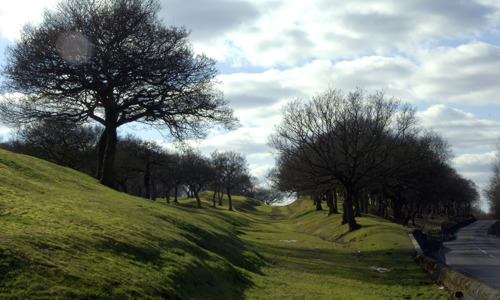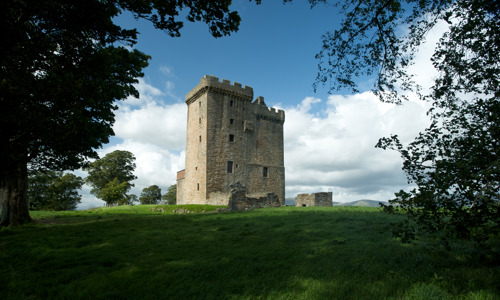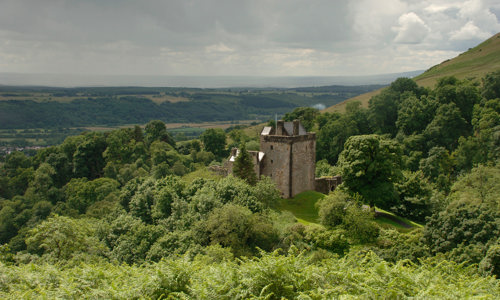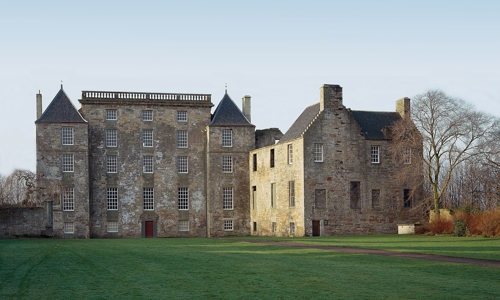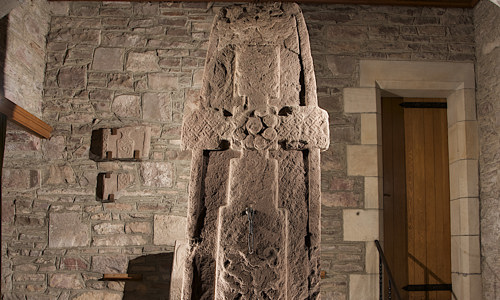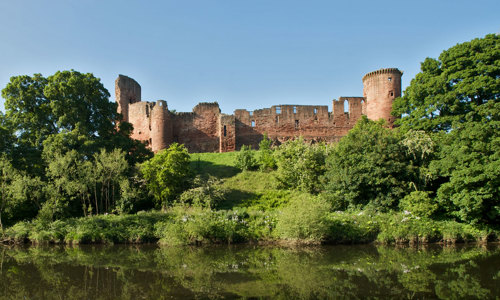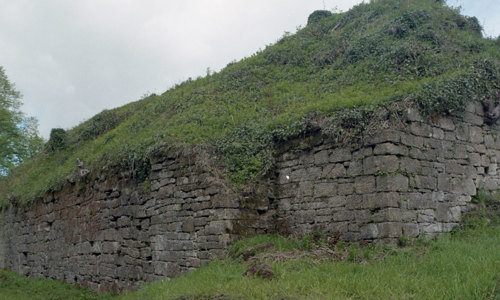History
Stirling Castle has been likened to ‘a huge brooch clasping Highlands and Lowlands together’.
From high on a volcanic outcrop, the castle guarded the lowest crossing point of the River Forth for centuries. Today it remains a great symbol of Scottish independence and national pride.
The castle’s long, turbulent history features:
- William Wallace
- Robert the Bruce
- Mary Queen of Scots
- Bonnie Prince Charlie
Stirling Castle was first mentioned around 1110, and many royal dramas unfolded here. Until the Union of the Crowns in 1603, almost every Scottish monarch had either lived in the castle, or been crowned or died here.
A vast amount of historical and archaeological research was undertaken as part of the Stirling Castle Project. View our research as it was published originally on the SPARC website.
A complex castle
Stirling Castle is a complex monument of diverse buildings and spaces added over the centuries.
The three main enclosures within the castle are the:
- outer defences, on the main line of approach
- main enclosure, at the summit of the rock, bounded in the south by the Forework and encircled by a defensive wall
- Nether Bailey, to the north
At the castle’s heart is the Inner Close, a square formed of the principal buildings for royal occupation.
These buildings are the:
- King’s Old Building – built for James IV in 1496
- Great Hall – added by James IV around 1503
- Royal Palace – built for James V around 1540
- Chapel Royal – commissioned by James VI in 1594
Around the Outer Close are the Great Kitchens (early 1500s) and later army buildings.
The Nether Bailey, at the lowest part of the castle rock, houses powder magazines from the 1800s.
Guarding the main entrance from the town are the:
- Forework – built for James IV around 1500
- Outer Defences – added by Queen Anne around 1710
An icon of independence
Throughout the Wars of Independence with England (1296–1356), Stirling was hotly fought over and changed hands frequently.
Bloody battles waged nearby include:
- Wallace’s great victory over English forces at Stirling Bridge (1297)
- Robert the Bruce’s decisive defeat of Edward II at Bannockburn (1314)
Robert the Bruce had the castle’s defences destroyed to prevent it falling into enemy hands again. It was not substantially rebuilt until 1336, when the English recaptured it. The castle finally fell back into Scottish hands in 1342.
Centre of royal celebrations
Stirling was the preferred residence of most of Scotland’s later medieval monarchs, and most added something to its impressive architecture.
Scotland embraced the classical ideas coming from Renaissance Europe during the reign of James IV (1488–1513). He spent much time and money making the castle fit for a European monarch – partly to impress his queen, Margaret Tudor, daughter of Henry VII of England.
James V continued this legacy, as he was just as keen to impress his second French bride, Queen Mary of Guise. Their daughter, Mary Queen of Scots, lived in the Royal Palace as a child and was crowned here in 1543.
Later, in 1566, Mary’s own son, the future James VI, was baptised here. The fireworks display that ended the celebrations was the first recorded use of fireworks in Scotland.
In turn, James VI had the Chapel Royal built in haste for the baptism in 1594 of his first son, Prince Henry. A three-day celebration followed, but Henry died before inheriting the crown.

